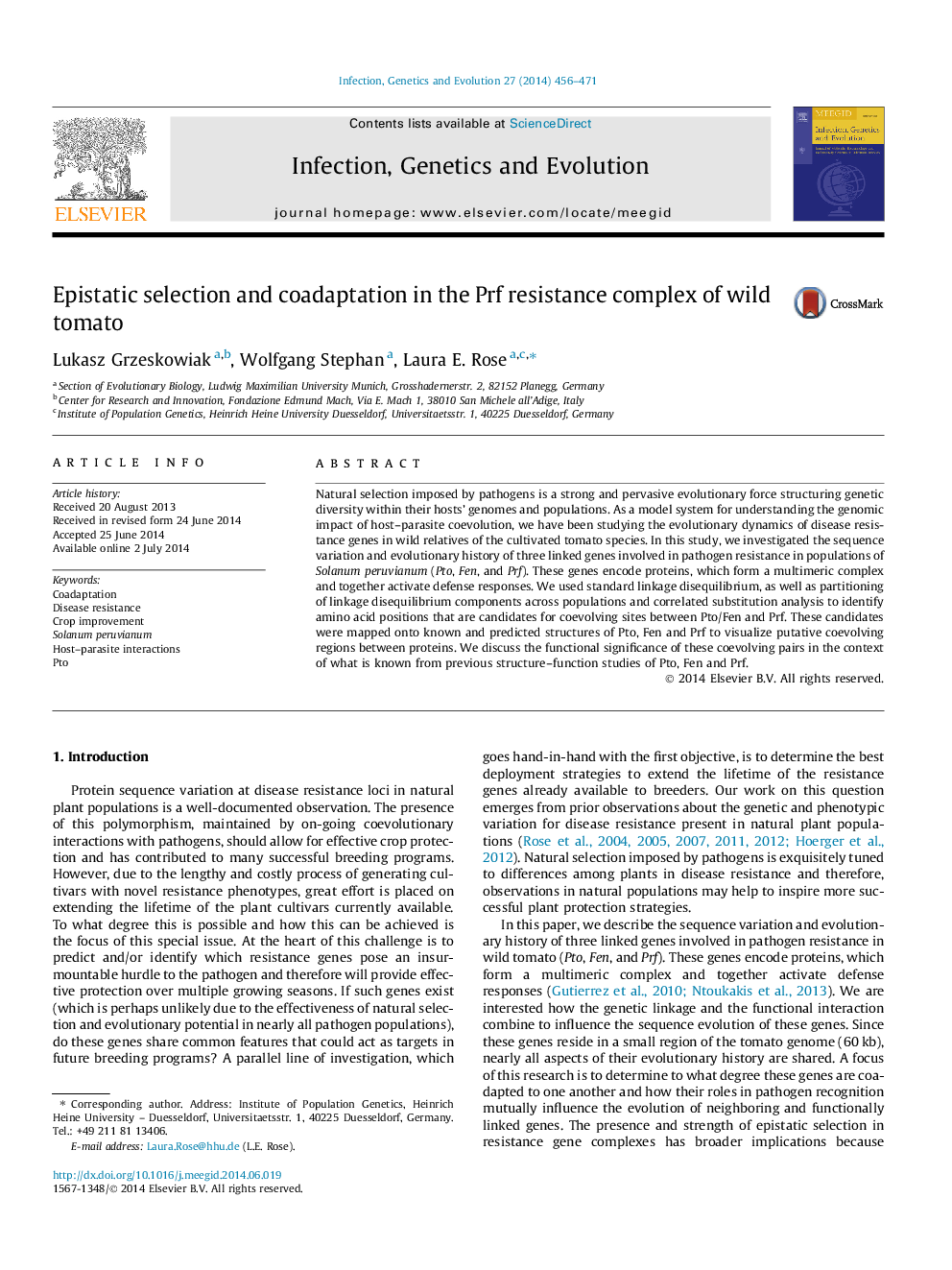| Article ID | Journal | Published Year | Pages | File Type |
|---|---|---|---|---|
| 5909834 | Infection, Genetics and Evolution | 2014 | 16 Pages |
Abstract
Natural selection imposed by pathogens is a strong and pervasive evolutionary force structuring genetic diversity within their hosts' genomes and populations. As a model system for understanding the genomic impact of host-parasite coevolution, we have been studying the evolutionary dynamics of disease resistance genes in wild relatives of the cultivated tomato species. In this study, we investigated the sequence variation and evolutionary history of three linked genes involved in pathogen resistance in populations of Solanum peruvianum (Pto, Fen, and Prf). These genes encode proteins, which form a multimeric complex and together activate defense responses. We used standard linkage disequilibrium, as well as partitioning of linkage disequilibrium components across populations and correlated substitution analysis to identify amino acid positions that are candidates for coevolving sites between Pto/Fen and Prf. These candidates were mapped onto known and predicted structures of Pto, Fen and Prf to visualize putative coevolving regions between proteins. We discuss the functional significance of these coevolving pairs in the context of what is known from previous structure-function studies of Pto, Fen and Prf.
Related Topics
Life Sciences
Agricultural and Biological Sciences
Ecology, Evolution, Behavior and Systematics
Authors
Lukasz Grzeskowiak, Wolfgang Stephan, Laura E. Rose,
